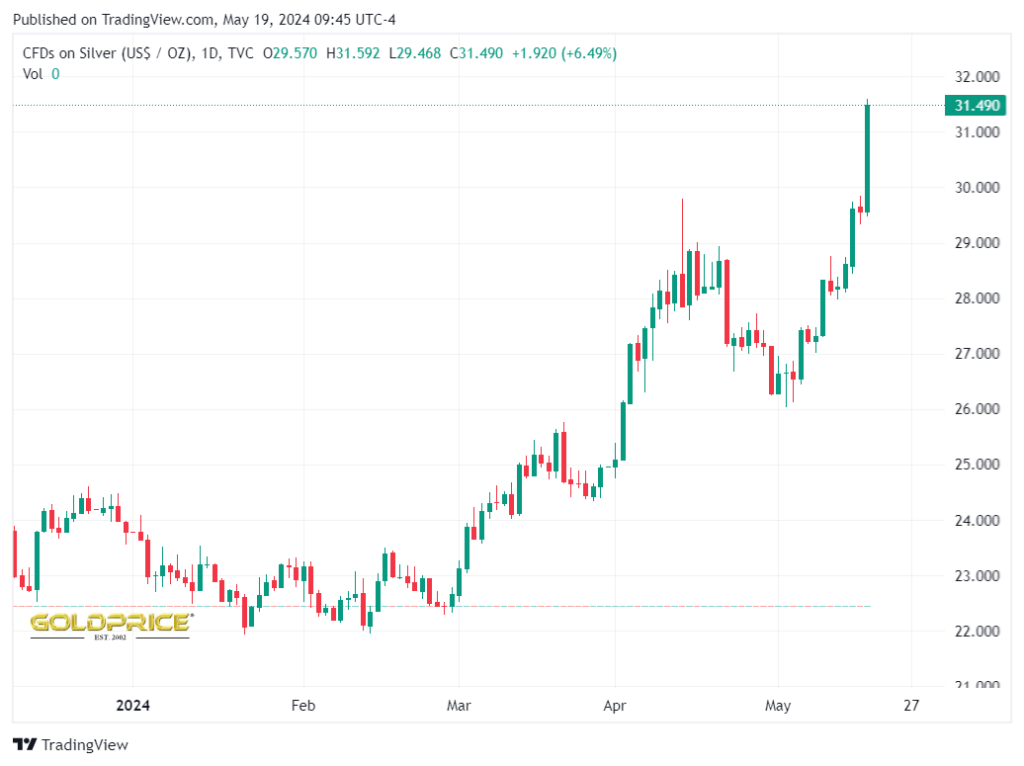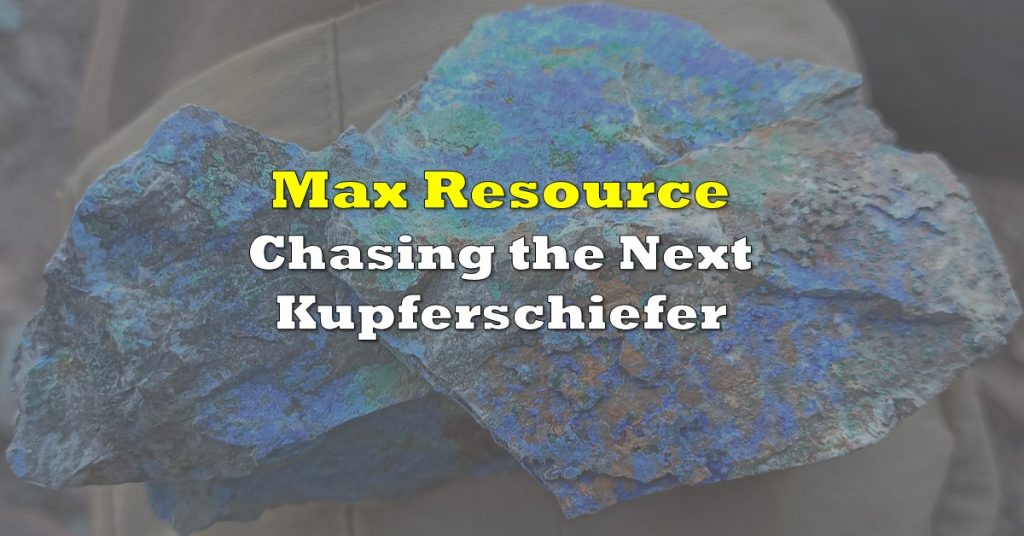Silver prices have reached their highest level since 2013 recently, crossing the $30-mark, as investors reacted to mixed economic data from the United States. Industrial production in the country unexpectedly stalled, while initial jobless claims fell largely as expected. Additionally, export and import prices rose more than anticipated.
Boom.
— TF Metals Report (@TFMetals) May 15, 2024
There it is. pic.twitter.com/CtlAVdAxSr
Holy Moly! Silver opened at $32.87 in Shanghai today.
— Don Durrett – goldstockdata.com (@DonDurrett) May 16, 2024
$7634 Yuan (kilo) = $1057 USD / 32.15 troy ozs = $32.87 pic.twitter.com/Pk0ffoUeMO
Compounding the mixed data, Federal Reserve Bank of New York President John Williams stated that more evidence is needed before the Fed can consider rate cuts. Previously, cooling consumer inflation and stagnant spending had increased the likelihood of several rate cuts this year. While markets still view September as a potential start date for monetary easing, the probability has decreased to around 68% from 72% the previous day.
Silver has surged by nearly 25% in 2024, outperforming gold and becoming one of the year’s best-performing major commodities. The gold-silver ratio currently stands at about 80, compared to the 20-year average of 68, indicating that silver remains relatively undervalued.

Both metals tend to move in tandem, offering similar macroeconomic and currency-hedging benefits. Gold has seen a record rally due to central-bank purchases, increased retail interest in China, and a resurgence in bets on lower U.S. interest rates. Silver, benefiting from robust financial and industrial demand, has followed suit. Although silver-backed exchange-traded funds have seen little interest, physical sales have increased, particularly at Singapore-based dealer Silver Bullion.
“Even clients interested in buying gold are starting to consider buying silver first and waiting for the ratio to rebalance,” said Gregor Gregersen, founder of Silver Bullion. Between April 1 and 25, the dealer sold 74 ounces of physical silver for each ounce of gold, compared with an average of 44 in 2023.
Silver’s appeal is bolstered by its dual role as both a financial asset and an industrial input, especially in clean-energy technologies. The metal is crucial for solar panels, and with the growth of the solar industry, silver usage is expected to reach a record high this year, according to the Silver Institute. The market is projected to experience a fourth consecutive year of deficit, with this year’s shortage being the second largest on record.
Industrial users, who typically rely on miners for supply, are turning to major inventories to meet demand. Stockpiles tracked by the London Bullion Market Association fell to their second-lowest level on record in April, while New York and Shanghai exchanges reported near-seasonal lows.
TD Securities warns that if the current demand pace continues, LBMA stockpiles could be depleted over the next two years. The headline figure overstates available volume as it includes holdings in exchange-traded funds, according to commodity strategist Daniel Ghali.
“We are slowly going to see supplies tightening because industrial demand is set to go higher,” Gregersen noted. “If investors also start buying, my biggest problem in two or three months might be ‘Where do I find supply?’ rather than ‘How do I sell the silver?'”
As a precious metal, silver is also an important component of investment portfolios. The largest industrial consumers of silver are the photographic, jewelry, and electronic industries. The top producers of silver include Mexico, Peru, and China, followed by Australia, Chile, Bolivia, the United States, Poland, and Russia.
Information for this story was found via Bloomberg and the sources mentioned. The author has no securities or affiliations related to the organizations discussed. Not a recommendation to buy or sell. Always do additional research and consult a professional before purchasing a security. The author holds no licenses.









